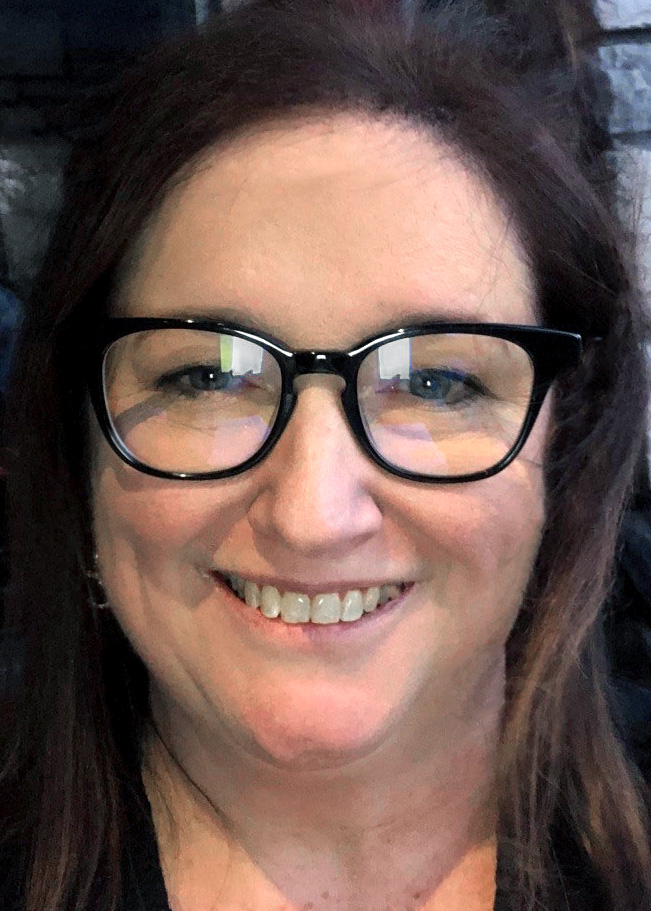

 Governments worldwide increasingly resort to shutting down the Internet as a political tool to control information and silence dissent. This alarming trend is not limited to developing nations grappling with civil unrest or political transition. Indeed, it is gaining traction in developed nations, suggesting a global phenomenon transcending geographical boundaries and socio-economic development levels. more
Governments worldwide increasingly resort to shutting down the Internet as a political tool to control information and silence dissent. This alarming trend is not limited to developing nations grappling with civil unrest or political transition. Indeed, it is gaining traction in developed nations, suggesting a global phenomenon transcending geographical boundaries and socio-economic development levels. more
 The digital domain encompasses the different spaces and spheres we use to relate and interact with the people and things that surround us using digital technologies. The Universal Declaration of Human Rights, UDHR, as the globally accepted standard, should serve us as the guiding light when it comes to striking the delicate balance between our rights and responsibilities on and off-line. more
The digital domain encompasses the different spaces and spheres we use to relate and interact with the people and things that surround us using digital technologies. The Universal Declaration of Human Rights, UDHR, as the globally accepted standard, should serve us as the guiding light when it comes to striking the delicate balance between our rights and responsibilities on and off-line. more
 A recent article in the Wall Street Journal discusses the possible contamination of copper telephone cables with outer lead sheathing. I'm not linking to the article because it is behind a paywall, but this is not a new topic, and it's been written about periodically for decades. The authors looked at locations around the country where lead cables are still present around bus stops, schools, and parks. more
A recent article in the Wall Street Journal discusses the possible contamination of copper telephone cables with outer lead sheathing. I'm not linking to the article because it is behind a paywall, but this is not a new topic, and it's been written about periodically for decades. The authors looked at locations around the country where lead cables are still present around bus stops, schools, and parks. more
 DNIB.com is a new industry-focused source of information, insights and data on the Domain Name System (DNS) -- a place to hear directly from subject-matter experts about relevant policy and governance news, DNS security and technology topics, and to provide industry data, analysis and insights on a regular schedule. DNIB.com builds on the Domain Name Industry Brief Quarterly Report, which summarizes the state of the domain name industry through a variety of statistical and analytical research. more
DNIB.com is a new industry-focused source of information, insights and data on the Domain Name System (DNS) -- a place to hear directly from subject-matter experts about relevant policy and governance news, DNS security and technology topics, and to provide industry data, analysis and insights on a regular schedule. DNIB.com builds on the Domain Name Industry Brief Quarterly Report, which summarizes the state of the domain name industry through a variety of statistical and analytical research. more
 In cooperation with the ICANN Security and Stability Advisory Committee (SSAC), we are planning a DNSSEC and Security Workshop for the ICANN78 Annual General Meeting being held as a hybrid meeting from 21-26 October 2023 in Hamburg, Germany in the Central European Summer Time Zone (UTC +2). This workshop date will be determined once ICANN creates a block schedule for us to follow; then we will be able to request a day and time. more
In cooperation with the ICANN Security and Stability Advisory Committee (SSAC), we are planning a DNSSEC and Security Workshop for the ICANN78 Annual General Meeting being held as a hybrid meeting from 21-26 October 2023 in Hamburg, Germany in the Central European Summer Time Zone (UTC +2). This workshop date will be determined once ICANN creates a block schedule for us to follow; then we will be able to request a day and time. more
 Domain names give your intellectual property visibility, as well as provide function for your company's infrastructure. Vital domain names are simply too important to be left exposed. To protect them, you can add extra layers of security to your digital brand with easy, secure, server-level protection in addition to multi-level locks that combat domain name system (DNS) hijacking and protect against unauthorized changes and deletions to your critical domain names. more
Domain names give your intellectual property visibility, as well as provide function for your company's infrastructure. Vital domain names are simply too important to be left exposed. To protect them, you can add extra layers of security to your digital brand with easy, secure, server-level protection in addition to multi-level locks that combat domain name system (DNS) hijacking and protect against unauthorized changes and deletions to your critical domain names. more
 Astronomy & Astrophysics published a research paper recently that looked at "Unintended Electromagnetic Radiation from Starlink Satellites." The study was done in conjunction with the Low-Frequency Array (LOFAR) telescope in the Netherlands. The LOFAR telescope is a network of over forty radio antennas spread across the Netherlands, Germany, and the rest of Europe. more
Astronomy & Astrophysics published a research paper recently that looked at "Unintended Electromagnetic Radiation from Starlink Satellites." The study was done in conjunction with the Low-Frequency Array (LOFAR) telescope in the Netherlands. The LOFAR telescope is a network of over forty radio antennas spread across the Netherlands, Germany, and the rest of Europe. more
 I attended a workshop on the topic of Internet Fragmentation in July. The workshop was attended by a small collection of Australian public policy folk, some industry representatives, folk from various cyber-related bodies, and those with a background in Internet Governance matters. It was a short meeting, so the perils of fragmentation were not discussed at length, as they often can be, but the concerns about the breakup of the essential bonds that keep the Internet together were certainly palpable in that meeting. more
I attended a workshop on the topic of Internet Fragmentation in July. The workshop was attended by a small collection of Australian public policy folk, some industry representatives, folk from various cyber-related bodies, and those with a background in Internet Governance matters. It was a short meeting, so the perils of fragmentation were not discussed at length, as they often can be, but the concerns about the breakup of the essential bonds that keep the Internet together were certainly palpable in that meeting. more
 Companies today manage hundreds or even thousands of domain names that support their organization, their visitors from different countries, and their brands and trademarks. They register misspelling of their names as a defensive strategy to protect their brand from online fraud, or from losing traffic to simple user typos. more
Companies today manage hundreds or even thousands of domain names that support their organization, their visitors from different countries, and their brands and trademarks. They register misspelling of their names as a defensive strategy to protect their brand from online fraud, or from losing traffic to simple user typos. more
 The American Medical Association fully supports telehealth. The group now has gathered enough evidence of the effectiveness of telehealth and touts the advantages of telehealth to its member physicians. There are still a few ongoing issues involving compensation, privacy, liability, and of course, rural patients without broadband access. more
The American Medical Association fully supports telehealth. The group now has gathered enough evidence of the effectiveness of telehealth and touts the advantages of telehealth to its member physicians. There are still a few ongoing issues involving compensation, privacy, liability, and of course, rural patients without broadband access. more
 In an earlier post, I asked whether electronically steered antennas (ESAs) would replace parabolic antennas in satellite ground stations. I did some research and concluded that it is likely that they will. Next, I discussed the same question with ChatGPT and, while it made several false statements, it made a relevant point that I had overlooked. The relevant addition was positive, but the errors were troublesome, so I decided to try ChatGPT's competitor Google Bard. more
In an earlier post, I asked whether electronically steered antennas (ESAs) would replace parabolic antennas in satellite ground stations. I did some research and concluded that it is likely that they will. Next, I discussed the same question with ChatGPT and, while it made several false statements, it made a relevant point that I had overlooked. The relevant addition was positive, but the errors were troublesome, so I decided to try ChatGPT's competitor Google Bard. more
 We've just published the 2023 edition of the DOTZON study "Digital City Brands." After introducing the study in early 2017, DOTZON has mapped how successful cities are using their Digital City Brands for the seventh year in a row. The Digital City Brand is the digital dimension of the City Brand and mirrors the "Digitalness" of a city. The advent of the Internet was why Digital City Brands came into being in the first place. more
We've just published the 2023 edition of the DOTZON study "Digital City Brands." After introducing the study in early 2017, DOTZON has mapped how successful cities are using their Digital City Brands for the seventh year in a row. The Digital City Brand is the digital dimension of the City Brand and mirrors the "Digitalness" of a city. The advent of the Internet was why Digital City Brands came into being in the first place. more
 In 2021, we discussed a potential future shift from established public-key algorithms to so-called "post-quantum" algorithms, which may help protect sensitive information after the advent of quantum computers. We also shared some of our initial research on how to apply these algorithms to the Domain Name System Security Extensions, or DNSSEC. In the time since that blog post, we've continued to explore ways to address the potential operational impact of post-quantum algorithms on DNSSEC, while also closely tracking industry research and advances in this area. more
In 2021, we discussed a potential future shift from established public-key algorithms to so-called "post-quantum" algorithms, which may help protect sensitive information after the advent of quantum computers. We also shared some of our initial research on how to apply these algorithms to the Domain Name System Security Extensions, or DNSSEC. In the time since that blog post, we've continued to explore ways to address the potential operational impact of post-quantum algorithms on DNSSEC, while also closely tracking industry research and advances in this area. more
 The U.S. Federal Communications Commission circulated draft rules to govern the lower 42 GHz spectrum (between 42-42.5 GHz). This is within the range of spectrum referred to as millimeter wave spectrum. This is one of the more unusual FCC spectrum deliberations because this spectrum is totally empty -- there is nobody currently authorized by the FCC to use the spectrum band. The FCC is starting this deliberation with a clean slate. more
The U.S. Federal Communications Commission circulated draft rules to govern the lower 42 GHz spectrum (between 42-42.5 GHz). This is within the range of spectrum referred to as millimeter wave spectrum. This is one of the more unusual FCC spectrum deliberations because this spectrum is totally empty -- there is nobody currently authorized by the FCC to use the spectrum band. The FCC is starting this deliberation with a clean slate. more
 Because DNS is such an omnipresent part of modern networking, it's easy to assume that functional DNS infrastructure can be left running with minimal adjustments and only needs to be investigated in the event of a malfunction. Yet there are small telltale signs that precede DNS issues -- and knowing what they are can help to prevent disruption before it happens. more
Because DNS is such an omnipresent part of modern networking, it's easy to assume that functional DNS infrastructure can be left running with minimal adjustments and only needs to be investigated in the event of a malfunction. Yet there are small telltale signs that precede DNS issues -- and knowing what they are can help to prevent disruption before it happens. more
Sponsored byRadix

Sponsored byVerisign

Sponsored byDNIB.com

Sponsored byIPv4.Global

Sponsored byWhoisXML API

Sponsored byCSC

Sponsored byVerisign
